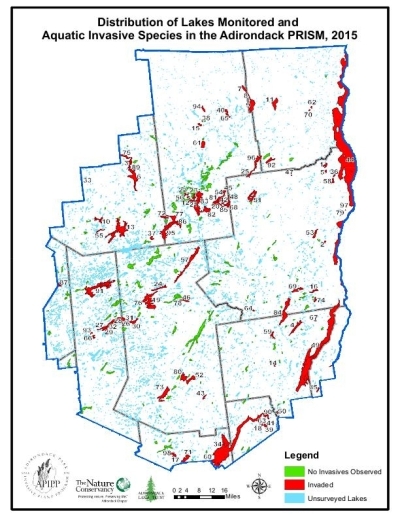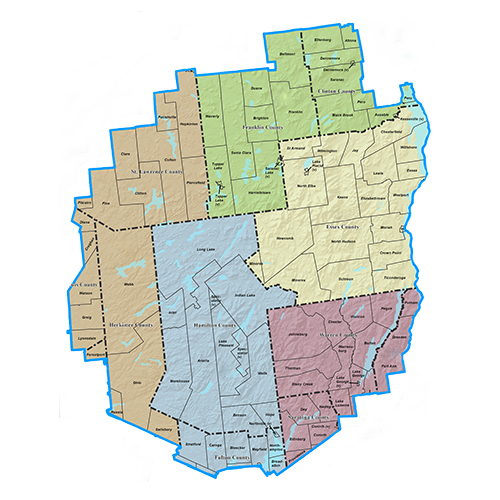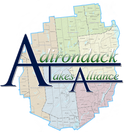EPF Awards Distributed to 24 Municipalities to Install Decontamination Stations and Educate Boaters on the Dangers of Invasive Species
Governor Andrew M. Cuomo today announced that over $2 million in grants from the Environmental Protection Fund will be awarded to municipalities, not-for-profits and higher educational programs for projects that will help protect New York State’s waters from the spread of aquatic invasive species. The projects, which range geographically from the Adirondacks to the Finger Lakes and beyond, will focus on educating boaters on the dangers of aquatic invasive species through the placement of boat stewards, the installation of decontamination stations, and the uniform training of boat stewards across the state.
“New York State is home to unparalleled natural beauty and we must do everything we can to protect it from invasive aquatic predators,” Governor Cuomo said. “This money will help safeguard lakes and rivers in every corner of this state, protect local ecosystems, and ensure that visitors can experience New York’s natural beauty and wonders for years to come.”
With over 7,600 freshwater lakes, ponds and reservoirs and 70,000 miles of rivers, brooks and streams, New York State is particularly vulnerable to the introduction of invasive species. Once established, aquatic invasive species, such as spiny waterflea and Eurasian water milfoil, can rapidly spread through connecting waterbodies or by “hitchhiking” on the vessels of recreational boaters and anglers. These grants are an important step in Governor Cuomo’s initiative to preserve New York’s vast waterways from the danger aquatic invasive species can cause to the environment, human health and the economy of a region.
“Aquatic invasive species are a significant threat to the environment and economy of New York State, and these EPF grants will go far in reducing their spread,” said DEC Acting Commissioner Basil Seggos. “Fostering partnerships and collaboration with local governments and other partners are essential combat this urgent threat, and I look forward watching these successful projects take off.”
The twenty-four projects awarded, which range from $36,000 to $100,000, represent the first grants of the New York Aquatic Invasive Species Spread Prevention Grant Program. These grants demonstrate DEC’s commitment to implementing the recommendations of the recently updated New York Aquatic Invasive Species Management Plan (AISMP). Included among the top ten priority actions in the AISMP is expanding boat steward programs and ensuring consistency of steward program delivery throughout the state. Boat stewards help prevent the spread of aquatic invasive species by delivering spread prevention education and outreach, conducting courtesy boat and trailer inspections and showing boaters how to inspect and remove plants and organisms from their boats, trailers and other equipment.
To view the list of awardees please visit the following link.
New York State Assembly Environmental Conservation Chair Steve Englebright said, “The best way to deal with aquatic invasive species and the ecological damage they cause is to prevent their further spread into New York State’s wealth of lakes, ponds and streams. The grants from this new program will go far to help municipalities, not-for-profits and higher educational institutions implement projects that will protect our State’s waters from the spread of aquatic invasive species. I commend Governor Cuomo and the NYS DEC for their efforts to implement the action-based recommendations of the recently updated New York Aquatic Invasive Species Management Plan.”
Proposed projects were scored on a series of criteria that assessed the objectives, methods, impact, location, long term success and cost effectiveness of a proposal. The program will complement existing aquatic invasive species spread prevention initiatives already underway in New York State including the Adirondack Aquatic Invasive Species Spread Prevention Pilot Program (launched in 2015), which was responsible for the installation of 12 new boat decontamination stations and the placement of boat stewards at 14 new locations within the Adirondack Park.
To learn more about aquatic invasive species and the threat they pose to New York State please visit the following link.
Contact the Governor's Press Office
Contact us by phone:
Albany: (518) 474 - 8418
New York City: (212) 681 - 4640
Contact us by email: [email protected]
Governor Andrew M. Cuomo today announced that over $2 million in grants from the Environmental Protection Fund will be awarded to municipalities, not-for-profits and higher educational programs for projects that will help protect New York State’s waters from the spread of aquatic invasive species. The projects, which range geographically from the Adirondacks to the Finger Lakes and beyond, will focus on educating boaters on the dangers of aquatic invasive species through the placement of boat stewards, the installation of decontamination stations, and the uniform training of boat stewards across the state.
“New York State is home to unparalleled natural beauty and we must do everything we can to protect it from invasive aquatic predators,” Governor Cuomo said. “This money will help safeguard lakes and rivers in every corner of this state, protect local ecosystems, and ensure that visitors can experience New York’s natural beauty and wonders for years to come.”
With over 7,600 freshwater lakes, ponds and reservoirs and 70,000 miles of rivers, brooks and streams, New York State is particularly vulnerable to the introduction of invasive species. Once established, aquatic invasive species, such as spiny waterflea and Eurasian water milfoil, can rapidly spread through connecting waterbodies or by “hitchhiking” on the vessels of recreational boaters and anglers. These grants are an important step in Governor Cuomo’s initiative to preserve New York’s vast waterways from the danger aquatic invasive species can cause to the environment, human health and the economy of a region.
“Aquatic invasive species are a significant threat to the environment and economy of New York State, and these EPF grants will go far in reducing their spread,” said DEC Acting Commissioner Basil Seggos. “Fostering partnerships and collaboration with local governments and other partners are essential combat this urgent threat, and I look forward watching these successful projects take off.”
The twenty-four projects awarded, which range from $36,000 to $100,000, represent the first grants of the New York Aquatic Invasive Species Spread Prevention Grant Program. These grants demonstrate DEC’s commitment to implementing the recommendations of the recently updated New York Aquatic Invasive Species Management Plan (AISMP). Included among the top ten priority actions in the AISMP is expanding boat steward programs and ensuring consistency of steward program delivery throughout the state. Boat stewards help prevent the spread of aquatic invasive species by delivering spread prevention education and outreach, conducting courtesy boat and trailer inspections and showing boaters how to inspect and remove plants and organisms from their boats, trailers and other equipment.
To view the list of awardees please visit the following link.
New York State Assembly Environmental Conservation Chair Steve Englebright said, “The best way to deal with aquatic invasive species and the ecological damage they cause is to prevent their further spread into New York State’s wealth of lakes, ponds and streams. The grants from this new program will go far to help municipalities, not-for-profits and higher educational institutions implement projects that will protect our State’s waters from the spread of aquatic invasive species. I commend Governor Cuomo and the NYS DEC for their efforts to implement the action-based recommendations of the recently updated New York Aquatic Invasive Species Management Plan.”
Proposed projects were scored on a series of criteria that assessed the objectives, methods, impact, location, long term success and cost effectiveness of a proposal. The program will complement existing aquatic invasive species spread prevention initiatives already underway in New York State including the Adirondack Aquatic Invasive Species Spread Prevention Pilot Program (launched in 2015), which was responsible for the installation of 12 new boat decontamination stations and the placement of boat stewards at 14 new locations within the Adirondack Park.
To learn more about aquatic invasive species and the threat they pose to New York State please visit the following link.
Contact the Governor's Press Office
Contact us by phone:
Albany: (518) 474 - 8418
New York City: (212) 681 - 4640
Contact us by email: [email protected]




 RSS Feed
RSS Feed
